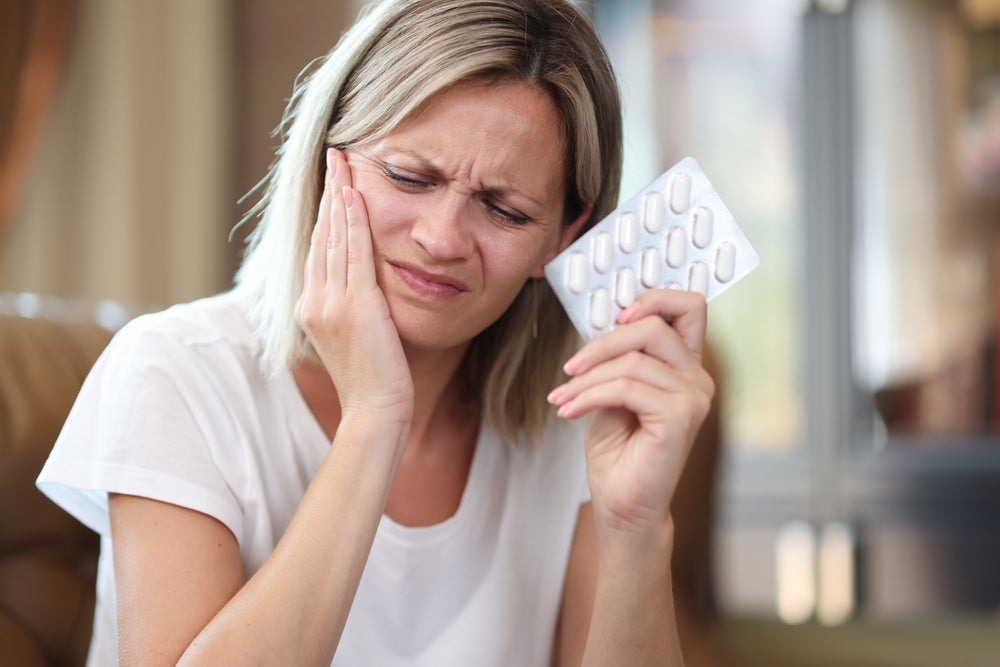
Whilst antibiotic resistance awareness has been a major public health priority over the last few decades, despite best efforts, antibiotic resistance in the dentistry has been steadily worsening with little mainstream attention. Dentists are responsible for 5-10% of antibiotic prescriptions worldwide, and thus a significant part of the overall global crisis.
Dr. Smitha Sukumar describes antibiotic resistance in dentistry as “an intractable issue that people are now seeing has many factors involved”. Sukumar is a senior lecturer and general dentist at Sydney Dental School with a special interest in antibiotic resistance in dentistry. She has experience as the discipline coordinator for treatment planning for the Doctor of Dental Medicine program and is a member of the Board of Examiners (MRACDS) for the Royal Australasian College of Dental Surgeons.

Discover B2B Marketing That Performs
Combine business intelligence and editorial excellence to reach engaged professionals across 36 leading media platforms.
In an exclusive interview with Pharmaceutical Technology, she talked about the major hurdles in dentistry that are leading to antibiotic resistance and what dentists are currently doing to tackle the evolving issue through stewardship programs. This interview has been edited for clarity and length.
Akosua Mireku: When and how are antibiotics commonly overprescribed in dentistry. How has the problem evolved in this community specifically?
Smitha Sukumar: According to the literature, the number one situation where antibiotics are overprescribed is root canal treatments. Imagine a patient comes in on a Friday evening. Giving them antibiotics to help them cope with the pain and infection, and then rebooking the patient for next week is often seen as the easier way out. During dental treatments, dentists are scared that [dental] treatment won’t work, so they think the antibiotics will cover anything I’ve missed… A lot of dentists also think that it will stop the pain, so they actually use it as an analgesic. This is because root canal treatment is very painful and it’s very hard to anesthetize a tooth that’s infected. So often the Friday prescription is given so by the time a patient comes on Monday, they think the pain is under control, and can be given an injection.
Another overprescribed area is prophylaxis. In dentistry, anything we do in the mouth can cause bacteria to flow into the bloodstream, so we have to be particularly careful when treating people who have defective heart valves or immunocompromised people. This is because there’s a chance that we [dentists] can spread infection.

US Tariffs are shifting - will you react or anticipate?
Don’t let policy changes catch you off guard. Stay proactive with real-time data and expert analysis.
By GlobalDataBut, in 2008, the UK investigated people who have a defective heart valve to see how many actually had complications after dental treatments. They could hardly find any, so they changed the National Institute for Health and Care Excellence (NICE) guidelines, for the first time to became much stricter [against antibiotic prophylaxis] to prevent overprescription.
[Having lived in London at the time], it was a shock to the system because patients would come in and we wouldn’t give them antibiotics, whereas in Australia, you did. [Initially] you’d give them one loading dose per hour before they had any [dental] procedure. But, after this UK study, everybody began to question if we were prescribing too much. This reduced prescriptions a lot. Dentists in the US are still very cautious… and Australia took a middle ground. Now, England has moved slightly back to become less strict, because they realize that some people do need antibiotics, but maybe not as much.
Prophylaxis for patients with joint replacements has also caused major overprescription of antibiotics. This is because if you’ve had a joint replacement, your orthopaedic surgeon will say you need antibiotics before you have dental surgery for the rest of your life. Dentists can’t consult with doctors to affirm this prescription, but there is no evidence to show that antibiotics are necessary here.
[Sometimes Antibiotics are prescribed to patients, who have had a joint replacement before they undergo dental work to protect the implants from bacteria that might enter the bloodstream during the dental procedure and cause infection.]
AM: Which specific antibiotics are overprescribed?
SS: The US has a huge problem with clindamycin prescription for dental prophylaxis for patients with endocarditis. Resistance to fluoroquinolones has also been causing an issue there. In Australia, these medicines are more restricted and oral quinolones can’t be prescribed to children. In many Asian countries, you don’t need a prescription for antibiotics. The factors playing into these differences are less health-related and are more influenced by social and governmental factors.
AM: How do different countries approach antibiotic resistance in dentistry and what factors play into this?
SS: There are guidelines for prophylaxis and general antibiotic use. These guidelines are regulated by NICE in the UK, and the Australian Dental Association in Australia. They have a committee that works with pharmacists and infectious disease specialists to give recommendations for guidelines. There is now more conversation between countries.
The FDI World Dental Federation has been recently focusing more on antimicrobial resistance to try and have oversight and create consistency in guidelines between countries. Scandinavian countries have lower overall antibiotic prescribing rates for dental procedures. In the UK, rates were lower before the Covid-19 lockdown, but since then there has been a steady increase in prescriptions.
The Federation is trying to regulate low-income countries as well, as they receive input from all over the world. However, access is still a major issue. People in larger, more developed cities tend to have closer proximity to dental care making access easier compared to more rural areas, and this issue becomes even more stark in low-income countries. Less regulation allows patients in areas with less access to dental care and pharmacies to have more consistent access to antibiotics. Antibiotic prescribing is so much more about things like access to health, clean water, education, and basic things that we have not successfully managed as a society. As the disparity between health and poverty becomes worse in higher income countries as well, there is a gap in dental care leading to more need for antibiotic prescription.
Nearly, all the Organization for Economic Co-operation and Development (OECD) countries have guidelines. However, nobody follows those guidelines. In a lot of Eastern European countries, dentists know about it [antibiotic resistance], but it’s hard to make that transition. For example, in the US, many dentists are scared of being sued if they don’t prescribe children antibiotics when parents ask for them.
AM: How is the pharmaceutical industry working with dentists to tackle this problem?
SS: We’re still on the hunt for new antibiotics that can be used in place of ones with high levels of resistance. Also, now there is a lot of focus on phage therapy or “busting biofilms”.
Biofilms are more resistant than planktonic [free-living] bacteria and researchers are looking for new mechanisms to target the biofilm. Some are using the bacteria within the biofilm itself and they are trying to implant favourable bacteria, so these can overtake whatever pathogens are there. They are also engineering nanoparticles where they go in and try and disrupt the biofilm that way.
[Phage therapy comes from bacteriophage viruses and has been shown to effectively fight and destroy multi-drug resistant bacteria. A biofilm is a thin robust layer on a solid surface that contains bacteria and other microorganisms. Dental plaque is an oral microbial biofilm that is found on exposed tooth surfaces in the mouth.]





